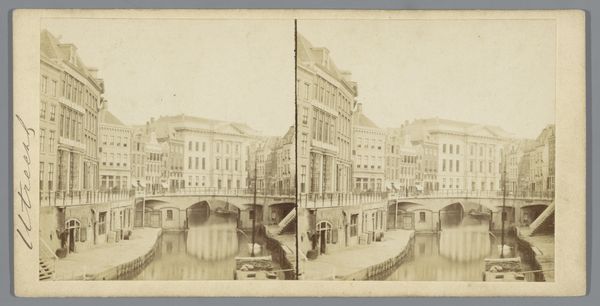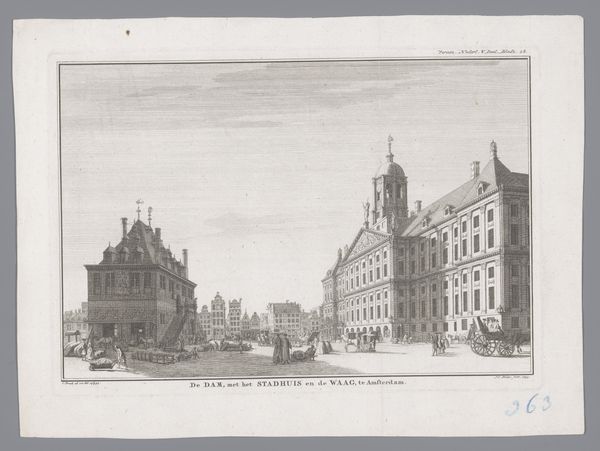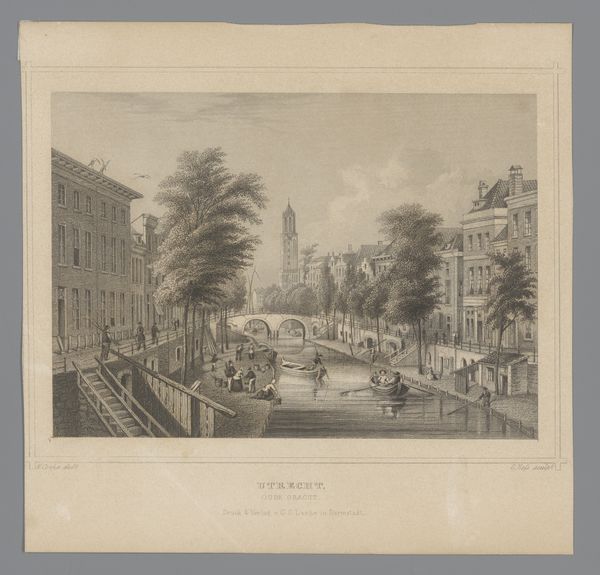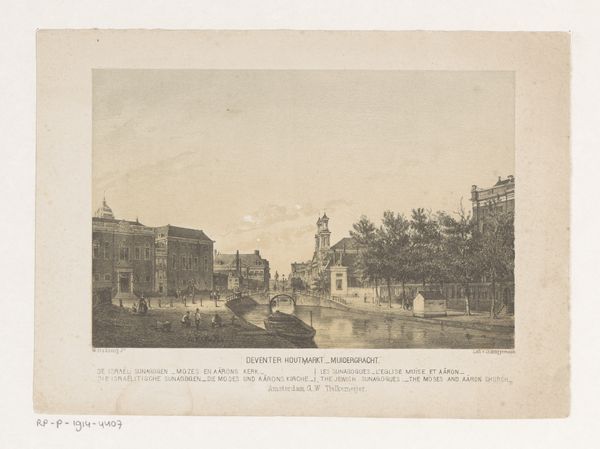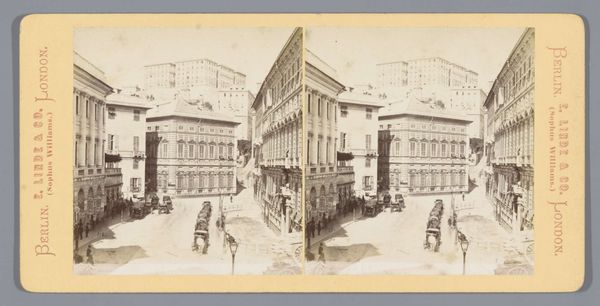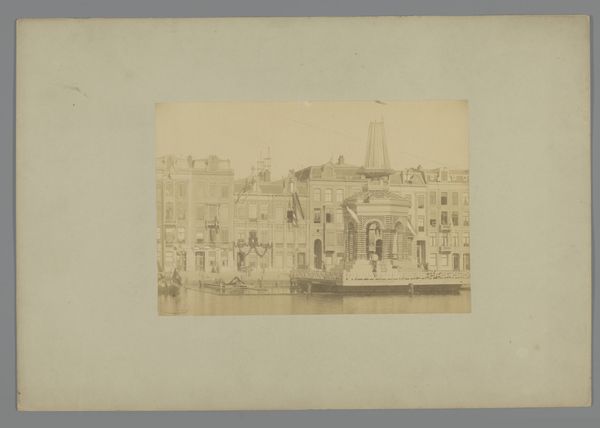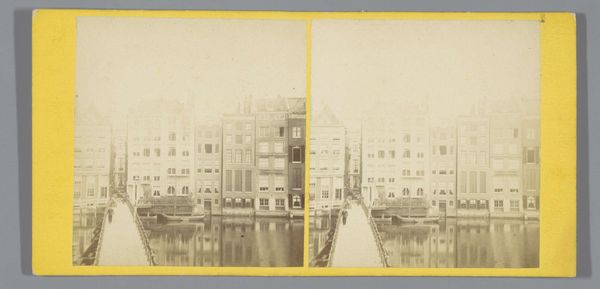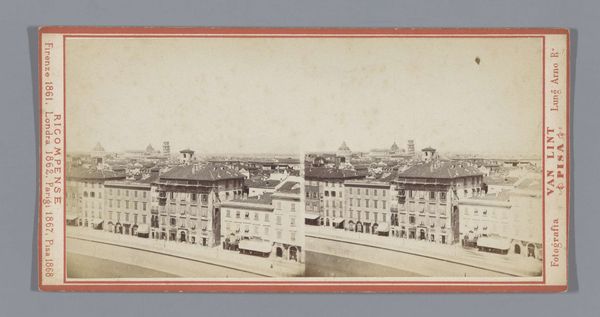
Gezicht op de Oudegracht met de Dom en de Bakkerbrug, Utrecht 1855 - 1865
0:00
0:00
pieteroosterhuis
Rijksmuseum
daguerreotype, photography
#
dutch-golden-age
#
daguerreotype
#
photography
#
cityscape
#
realism
Dimensions: height 87 mm, width 173 mm
Copyright: Rijks Museum: Open Domain
Editor: This is "Gezicht op de Oudegracht met de Dom en de Bakkerbrug, Utrecht," a photograph by Pieter Oosterhuis, dating from around 1855 to 1865. It's a stereoscopic daguerreotype of a cityscape. It's incredible to see such detail in such an old photograph! How would you approach interpreting this piece? Curator: Considering the daguerreotype medium, we must ask what this material represents socially and economically. Photography democratized image-making, challenging the dominance of painting as a luxury good, did it not? Its labor-intensive process also merits consideration. What were the working conditions for Oosterhuis? Editor: That’s a really interesting point; I hadn’t thought about the physical process so much. Curator: The scene itself invites questions too. The Bakkerbrug – baker's bridge, it’s called, and the Dom tower both imply commerce and labor. Consider how the bridge functions not only to literally connect things, but as a conduit for social exchange. Notice too how the material limitations of early photography impact what is depicted – or perhaps more accurately, what *could* be depicted. Think of the exposure times. Did they influence which subjects were deemed most ‘suitable’? Editor: So, the technical constraints shaped artistic choices. Were subjects chosen simply because they were stationary? Curator: Precisely! And if we read the city itself as a material entity – built with brick and stone, reflecting cycles of labor and consumption, the image serves as a document of this transformation, also! It shows the structures shaped by material realities, as well as people shaping the structures themselves. Editor: That makes me see the photograph as much more than just a pretty cityscape. It's like a snapshot of production. I'll think more about process going forward. Thanks! Curator: And I'll remember the significance of subject-selection pressures! Every image conceals decisions about what—and who—remains unseen, a product of available materials and modes of production.
Comments
No comments
Be the first to comment and join the conversation on the ultimate creative platform.
